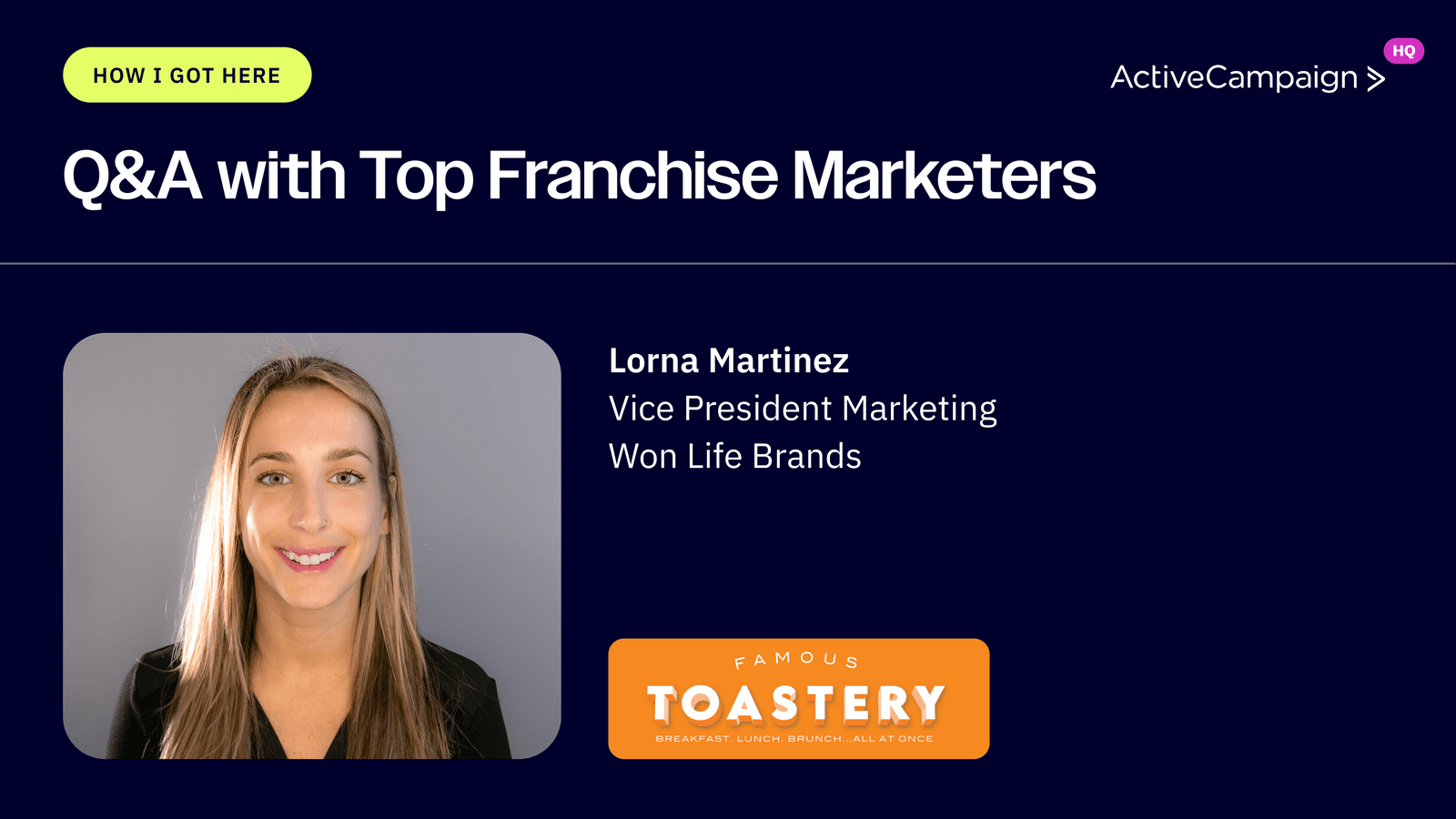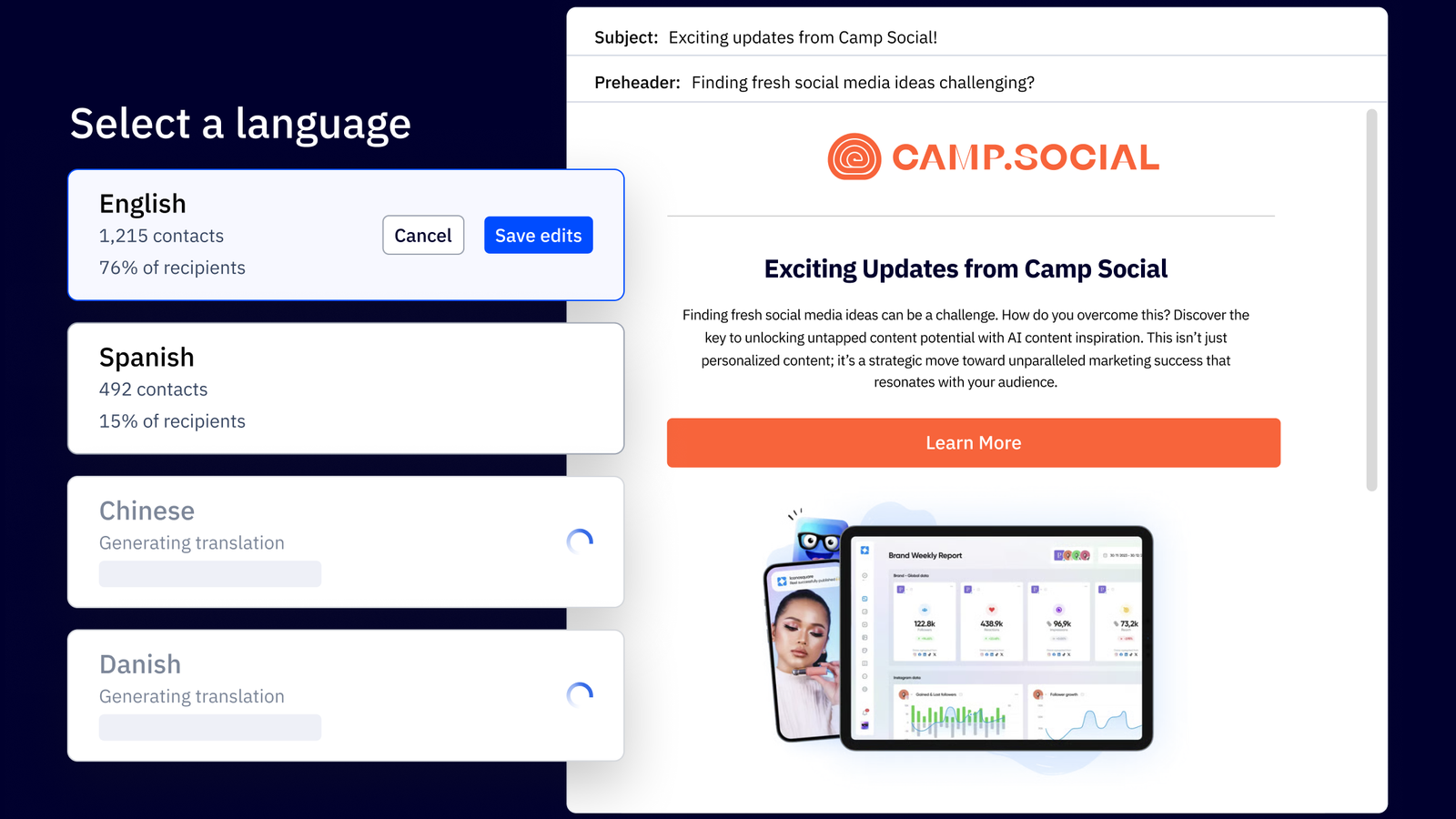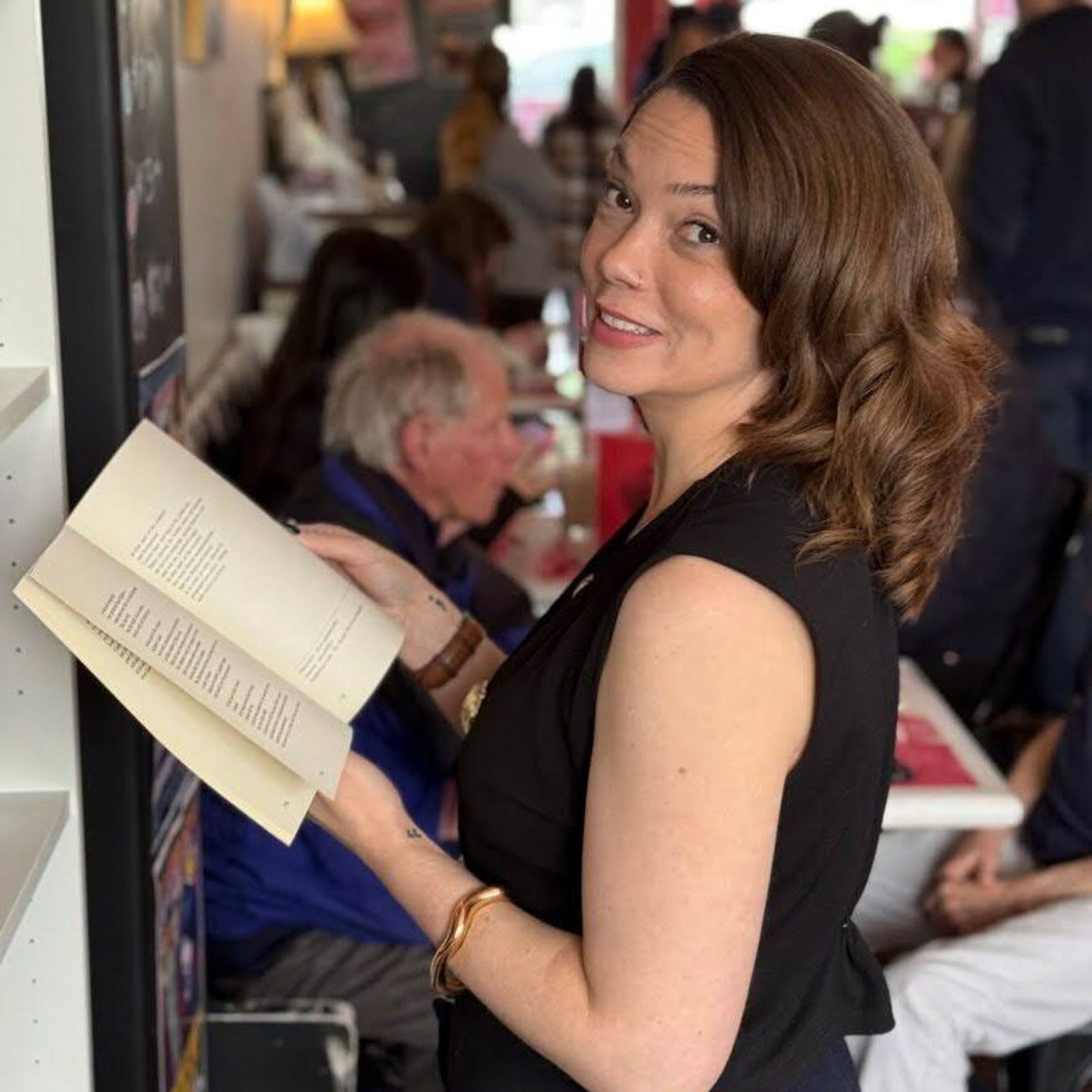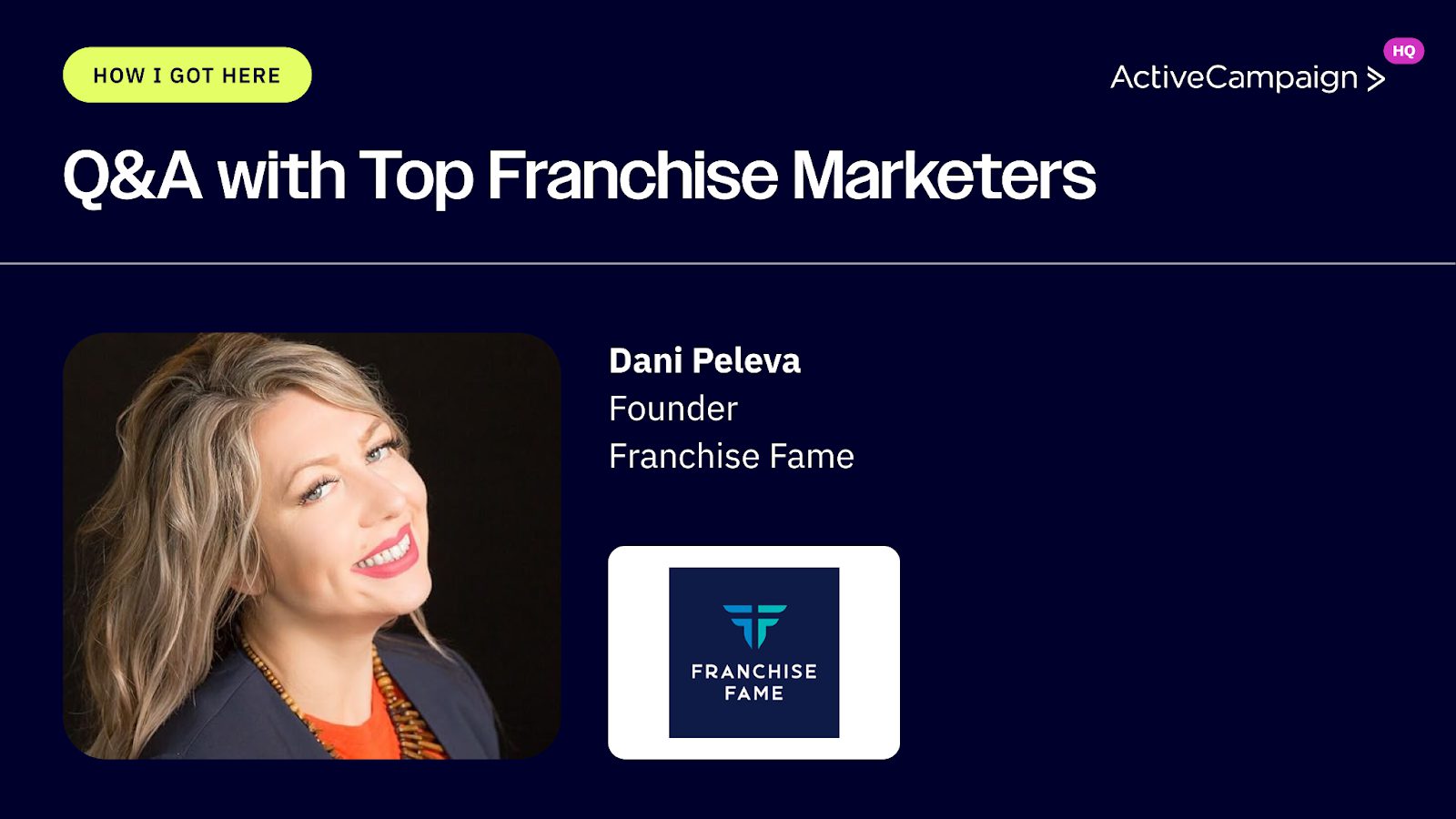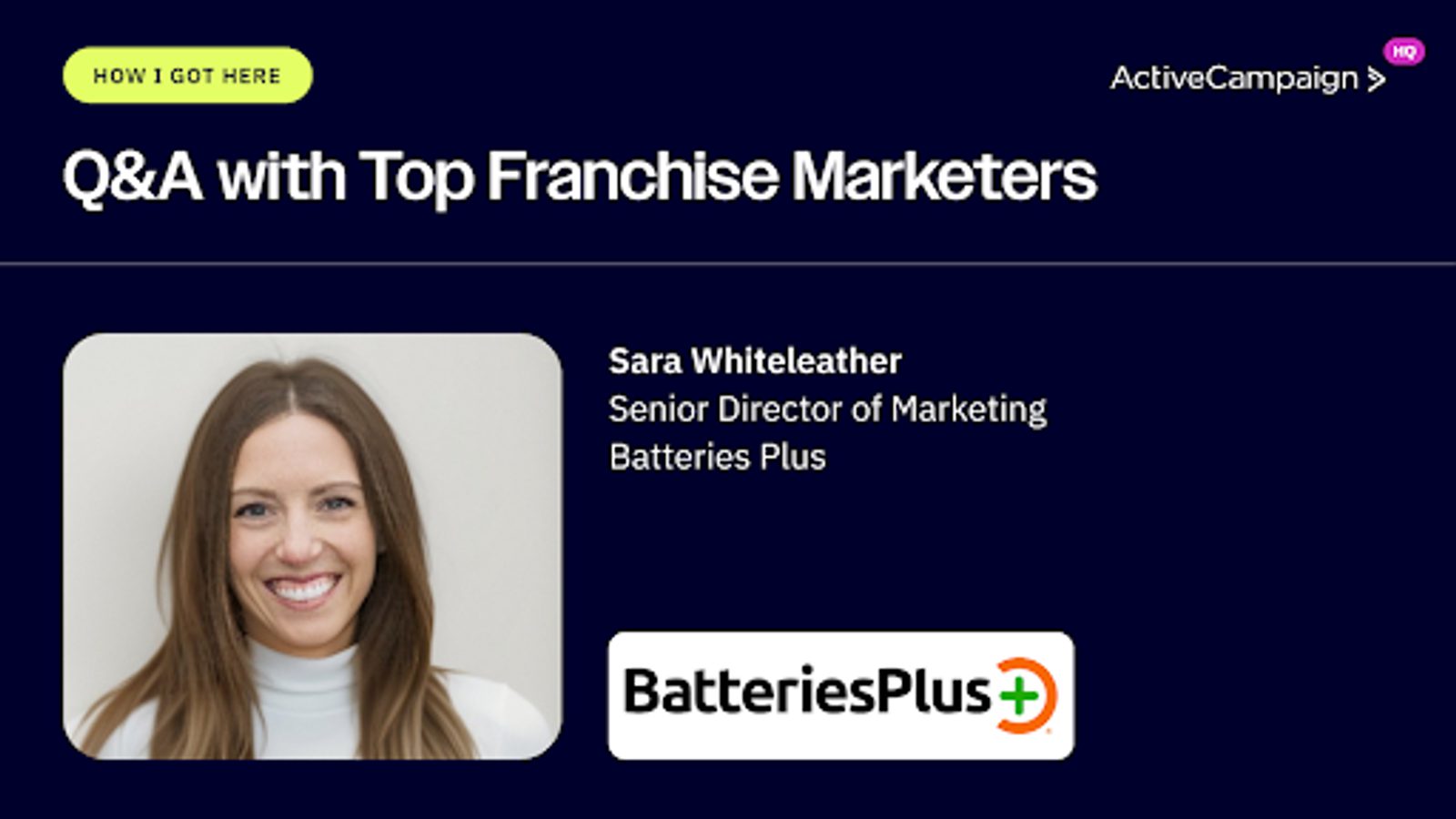Lorna Martinez never anticipated going into franchise marketing. She cut her teeth on the sports side, working for soccer club Sporting Kansas City and then in PR and marketing at Reebok, where she had an enviable experience traveling all over the U.S. and collaborating with big-name athletes like Shaquille O'Neal.
Moving to Charlotte, NC, for her husband and starting a job with the regional franchise Famous Toastery was a bit of a shock initially — but she quickly started using her marketing skills to turn the brand from an underdog to a national player.
During her tenure, Lorna has orchestrated a digital transformation — redesigning the website, launching location pages, improving third-party engagement — resulting in some locations going from decreasing sales to increasing by double-digit percentages.
She was part of the team that prepared the brand to pull off the title sponsorship of a national college bowl game with just six weeks’ notice, launching them onto the national stage. She has recently led a full brand refresh to align with how the company and its demographic had evolved over the years.
All of this work has led to clear growth: Last year, the brand signed agreements for seven new locations, expanding its existing footprint by 30% and launching in three new markets. And, she grew into a role as the Vice President of Marketing for Won Life Brands (the parent company of Famous Toastery) to do the same for four other companies.
In our interview, Lorna shares some of the tactics and mindsets that made that impressive growth happen.
What changed in your approach when you shifted from a corporate brand like Reebok to franchise marketing?
The people aspect. Franchisees are entrepreneurs: They’re feeding their families, and they believe in your business so much that they brought it into their own community. We want each of them to succeed, they shouldn’t have any other plans other than success.
So, you have to take that to heart in everything you do and let your marketing be impacted by that. You're not doing marketing for fun and games — you’re doing it because people’s livelihoods depend on it. That’s what franchising means to me.
"Franchisees are entrepreneurs: They’re feeding their families, and they believe in your business so much that they brought it into their own community."
How does this people-focused approach show up tactically in how you do your job?
With data. When I started, there weren’t a lot of metrics or KPIs. It was just, “We’re doing this campaign because it feels like it’ll work.” At Reebok, we tracked everything: every SKU, every sale, who sold, who didn’t, what worked, and where.
The data and metrics allow you to take the guessing game out. It allows you to report back on campaigns that were successful, whether because they drove revenue, brand awareness, or other KPIs. And it allows you to communicate that clearly to franchisees, because not all of them have marketing backgrounds, so we need to make sure they understand that we're supporting them in a way that’s tangible.
We track everything from engagement on social media to average ticket price and guest count to sales and revenue as a whole. And then we have a biweekly newsletter where we communicate metrics back to the franchisees.
If a campaign doesn’t work, great — I don’t care about failing, but I’m going to fail quickly because we’ve got to pivot and I need to know when to do that.
Can you share an example of a campaign or initiative that didn’t work out the way you wanted, and how you adjusted based on what the data told you?
We had a big, international food influencer come to us. He was preparing for a national tour and wanted to stop at Famous Toastery as part of it. We planned content for him that was aligned with his brand, and put a lot of thought into it.
But it missed the mark on every KPI: engagement, awareness, sentiment. What he ended up putting out just didn’t make sense for us as a brand. It wasn’t aligned with our offerings. And I think he felt that too. He would put up a post and then take it down and try something different another day. His audience wasn’t engaging with it. We even did a social media giveaway of items signed by him, and no one entered.
And that’s where you realize: everyone wants the macro influencer, right? People think the greater the impressions the better, when impressions don’t necessarily translate. For international brands it can be better, but for regional brands like Famous Toastery I think it’s better to find someone who’s in the market that I want to influence.
We shifted our focus to more niche influencers — people where it feels organic that they’d walk into a Famous Toastery. Consumers are so smart now. They know when money is being exchanged, but if someone is talking about a problem and our brand as a solution, even if it’s paid, it feels organic.
"But it missed the mark on every KPI: engagement, awareness, sentiment."
What are some of the biggest wins you’ve had, marketing-wise? How did you achieve those?
Third-party engagement is my biggest win. Before I started, there was none. Some locations were on DoorDash, some on UberEats, some on Grubhub — but no activations, no reporting, nothing. Now, 12–20% of our business at Famous Toastery at any given time comes from third-party apps, which is huge, especially for a brunch concept.
We built our third-party ecosystem through sponsored listings, spend-and-get campaigns, participating in DoorDash promotions, top-off programs, and really treating those platforms like the marketplaces they are. I love when people go to DoorDash and they look up Famous Toastery — that's fantastic. I care about reaching people who don’t yet know what they want and showing them why Famous Toastery is the answer.
I think if you keep the guest in mind and you have omni-channel campaigns, that's exactly where you need to be. Where is that guest shopping? Where is that guest looking, not necessarily for me, but they're looking for my service?
Meet them where they're at, and then you've got something to go off of.
For example, we're launching our summer specials in June. We have a full digital plan — banners and pop-ups on our website. In store, we created new menus, new easels, and a new four by six frame insert. There will be an email blast, there'll be a text message for our loyalty program. We have a full social media campaign with both organic and boosted, and influencers on top of that. Those are our big buckets that we check every single time.
Did you run into resistance from franchisees around third-party platforms?
I have to constantly find that balance with our operations team. Before launching a promotion, I make sure that location has the capacity and team for it. If not, it can go south very quickly.
We do this via Level 10 leadership meetings once a week with me, the president, the VP of operations, the VP of training, the VP of IT, and finance. We go over the data, set quarterly goals, do IDS which allows us to discuss any issues, and set the tone for the week.
How do you communicate big changes to all your franchisees?
Our recent brand refresh is a great example. We did it in phases.
First was feedback. I’m not going to do a refresh that I think is going to be great, I need actual feedback — going back to data — from the franchisees, the general managers, and the guests to understand what this refresh should look like. We got color feedback, menu feedback, uniform feedback, mostly during our GM and franchisee meetings. The uniforms, for example, came directly from team feedback. We didn’t just pick something cute — they’re breathable, season-appropriate, and have mesh backing for chefs in hot kitchens.
We did surveys, focus groups, meetings — you name it. I told people that I was an open book and got feedback from training, ops, team members, franchisees across states. Once you ask for feedback, I find that people are happy to give it.
Then we take all of that data and present it. We bring everyone onto calls — franchisees, corporate GMs — and share everything with them. The worst thing we could do is leave them in the dark.
Then we rolled the refresh out in phases so no one was blindsided by financial costs. A brand initiative should always complement whatever we're doing or make it better, not put you under. Phase one was new uniforms, menus, and website updates. Phase two is signage. Phase three will be interior elements. We want to make sure it’s all rolled out in a way that feels manageable for everyone.
Feedback has been nothing short of positive. We also show it for franchise development and every single time it’s a ten out of ten — they’re so excited to see that this is how the brand has evolved. Everyone has participated in at least phase one; we have some financial restraints with phase two, but they all want to do it.
The one downside to this approach has the risk that customers go to the refreshed website before visiting a location that hasn't done the refreshes yet or is still in the process — because we gave them about a two-month buffer — and experiences a brand mismatch. We haven’t actually gotten any negative feedback to that effect, it’s just something I think I’d feel.
And then, of course, you'll always get the franchisees who think they have a better vendor, and then that's when we have to show them that we did all the research, we got the best prices, we won everything for them, because we don't want them to have to worry about that.
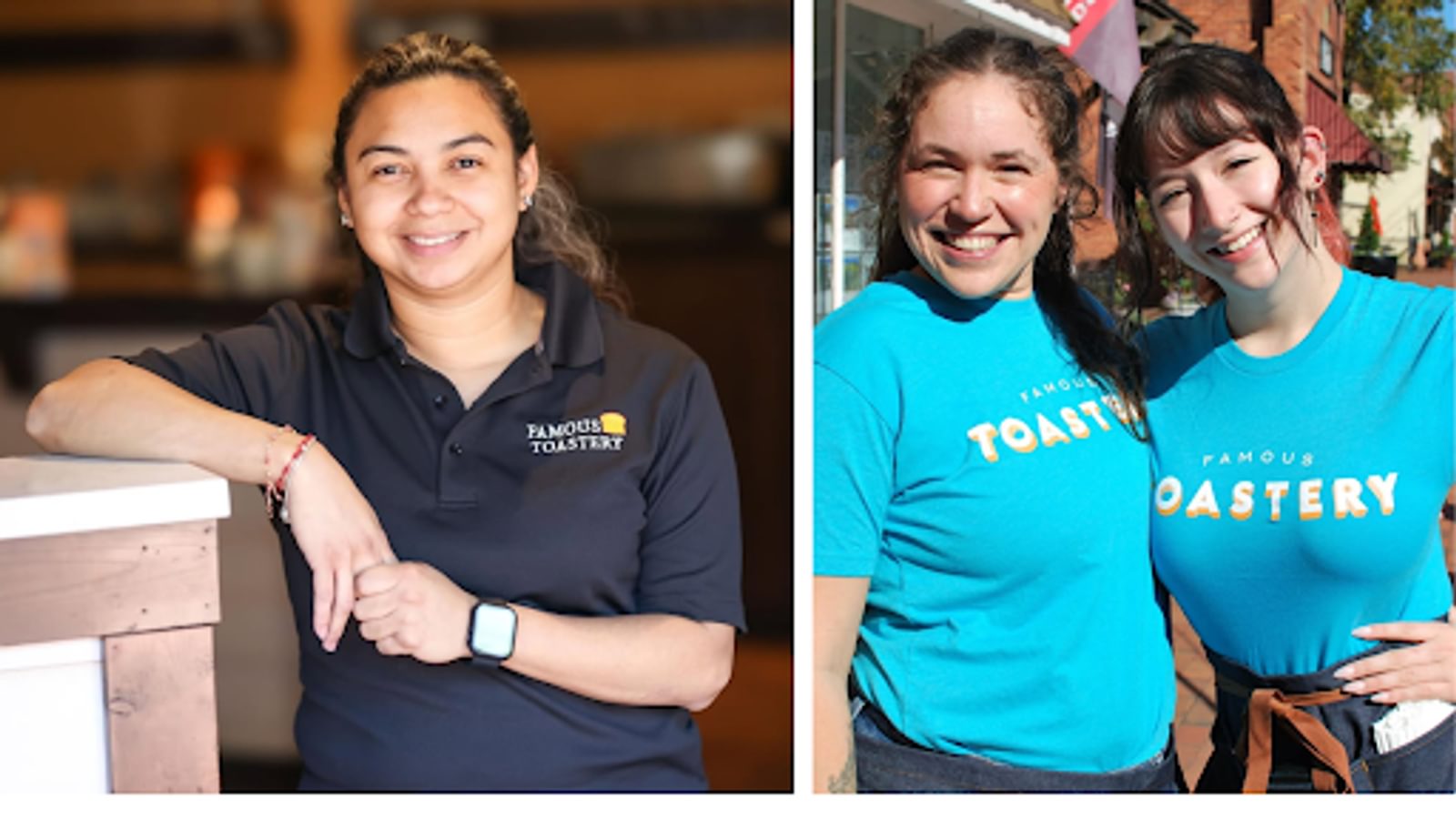
Old and new uniforms
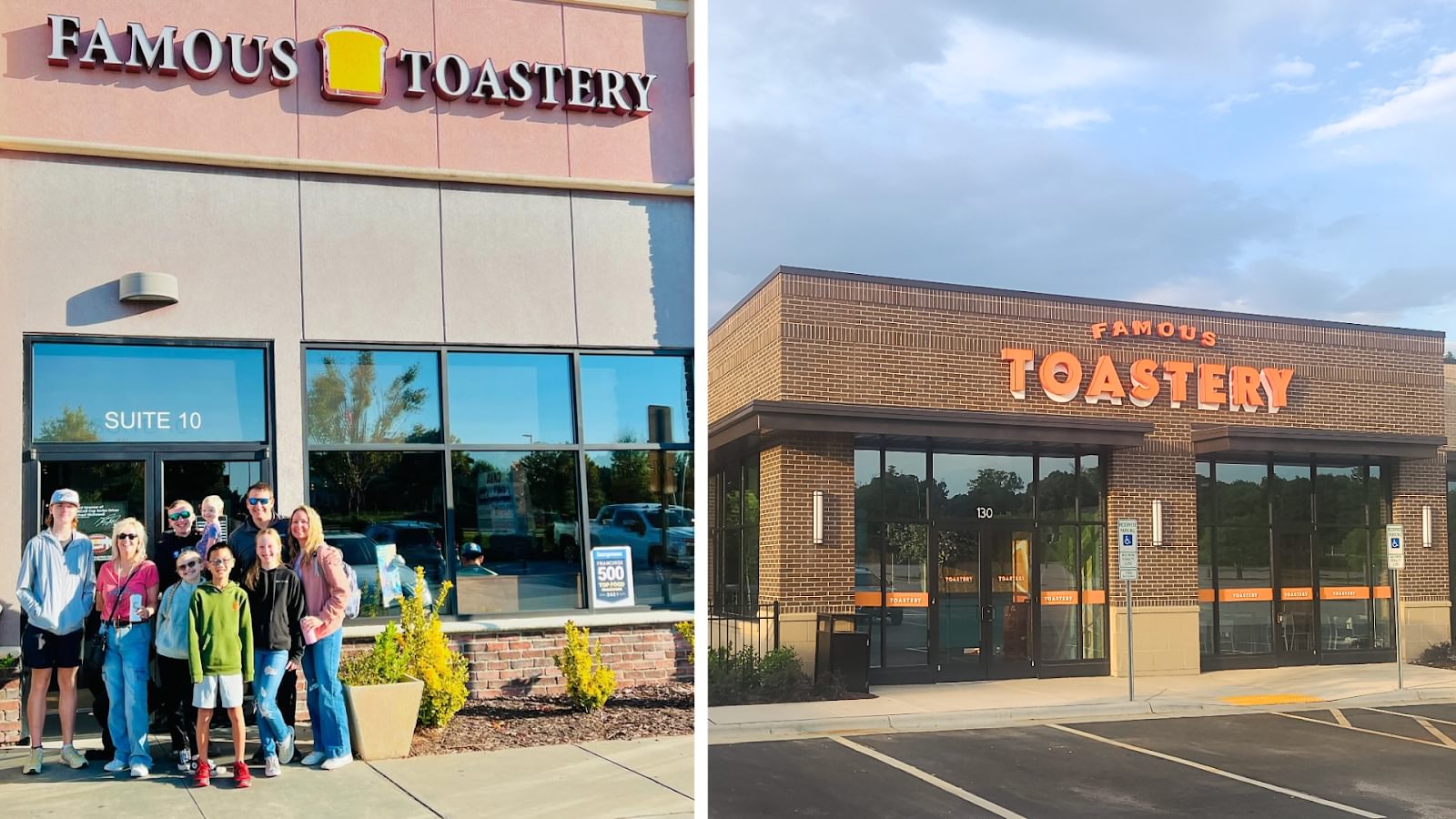
Old and new signage
The Famous Toastery Bowl seemed like a major tentpole moment for the brand. Can you share more about how that opportunity came about, the strategy behind it, and what kind of impact you saw?
The Famous Toastery Bowl came up when ESPN came to us out of the blue — we had no existing relationship with them — and we were just as shocked as everyone else. We thought, “Famous Toastery, getting picked for a national bowl game? Why didn’t you pick one of the big dogs?”
So the first thing we had to change was our mentality — we had to stop honoring the old mindset of being the “little guy.” We were sought out for this opportunity, Charlotte [where the game was held] is our home base and where the majority of our locations are, and people see the value in us.
The exposure was wild. We were working with media outlets we’ve never worked with before. We worked with ESPN on all the press releases and digital content. We even filmed our first commercial, and we were on the news. Our website crashed the day of kickoff because we’d never seen numbers like that. Our social media followers went up a good amount, though some have left since then.
We also saw an increase in foot traffic, especially at our University location which was right by the game — they were up double digits from quite some time. And then we got all the impressions from ESPN, not just from the bowl game, but even more because it ended up being a riveting game that went into overtime. So we got all the pre-game and post-game buzz, plus all the replays and highlights — it really launched us on a national platform, and now we’re opening in San Antonio and Arizona.
From a marketing perspective, we had to make sure the brand was ready. That meant refining the messaging, getting the voice dialed in, and making sure we were prepared so that when the spotlight came, it was amplification—not confusion. We didn’t want it to feel like, “Oh, that’s weird. Famous Toastery getting into football?” We wanted it to feel like, “Wow, Famous Toastery is a player in this.”
We also had to make sure our social media played along with the bowl game, while still staying true to our brand voice. We had to figure out how Famous Toastery’s specific messaging could go hand in hand with a national football game. Like: Where does brunch and college football overlap? We got creative with it and found a way to make it work.

